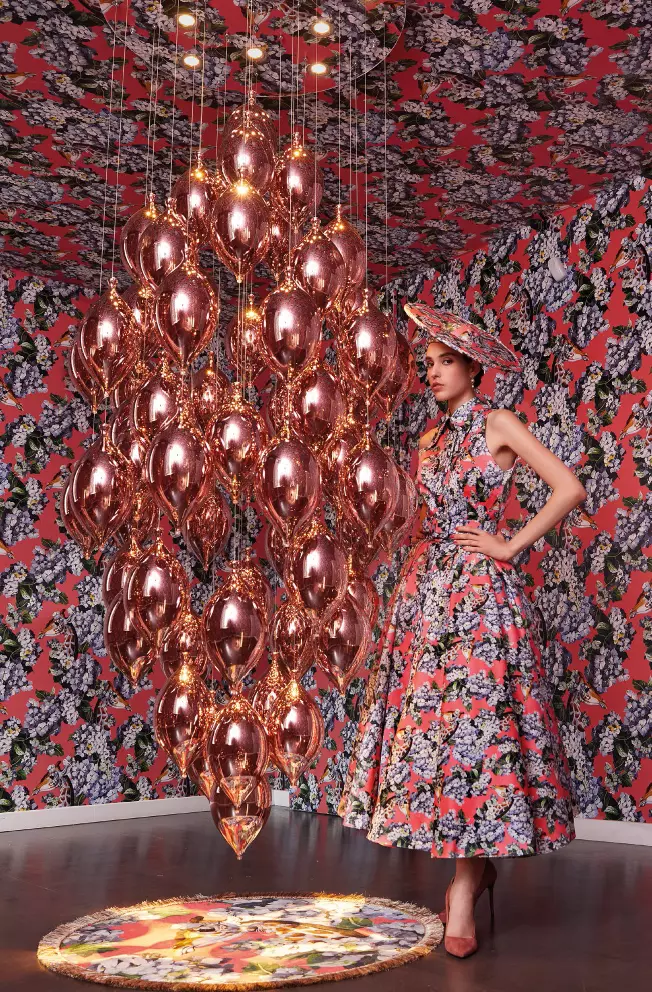
Simone Guidarelli Home(Photo Cosimo Buccolieri)
Not everyone is familiar with Le Corbusier, the 20th century Swiss architect who conceived homes as “machines à habiter” and defined cities through functionalist principles. Yet it’s because of him - possibly the most influential architect ever - that most people perceive fashion and interiors as two worlds apart. “Style, in architecture, is the equivalent of a feather on a lady's hat: a nice touch, but useless”, he famously said. And generations of furniture designers followed his suit. Yet, historically speaking, fashion was not as frivolous as Corbu thought. “Habitus (dress) and habitare (home living) stem from the same root in Latin”, says Alba Cappellieri, Head of Fashion Accessories and Jewelry at Milan's Polytechnic University and President of the Milan Fashion Institute, “Both words relate to the body and should not be conceived as inconsistent style concepts but as meaningful presences in our existence”.
AND IT USED TO BE EXACTLY LIKE THIS
Think Art Nouveau, Futurism, Bauhaus: all designers involved conceived their interiors with a “total look” in which all details - home accessories to surfaces to clothing - were part of overall programs. Yet such programs were not merely aesthetic propositions but physical applications of (political and ethical) values, guiding principles towards one precise direction. They used to call them manifestos.“And here lies the fundamental difference between fashion and design back then and now. Collective manifestos have been replaced by individual commercial propositions related to lifestyle”, says Cappellieri.

Diesel Living with Lodes
THE CHANGE OCCURRED WITH A SMART INTUITION
It was Italian ceramics entrepreneur, Francesco Zironi of Piemme who had it. Since ladies were the final decision makers when it came to home interiors, what would happen if a well-known fashion designer conceived the décors for his tiles? Zironi recruited nothing less than Valentino who designed for him highly styled collections, perfect to create an atmosphere. It was a time in which furniture was experimental, radical and extremely political: in 1972, the exhibition Italy: The New Domestic Landscape at the MoMA in New York had shown Italian design to the world as a direct attack to post-war domestic liturgy with the man as the leading figure and the woman as his faithful carer. The Valentino operation indicated a totally different direction: it put the accent on beauty rather than function. It was the first statement of home interiors as an individual's choice, as pure lifestyle rather than adherence to a shared manifesto.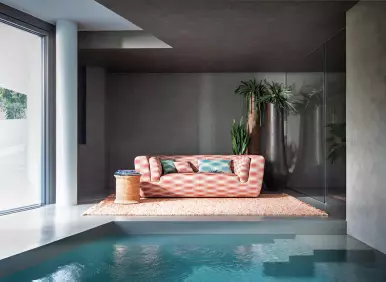
Missoni Home
THE SUCCESS OF HOME COLLECTIONS STEMS FROM THAT PIONEERING INTUITION
The Piemme/Valentino experiment tapped into an emerging social and cultural trend (individualism vs a collective, idealistic approach) that was starting have an appeal in an increasingly consumeristic society.The idea behind the equation fashion + furniture is simple: if you appreciate the garments of the likes of Versace or Giorgio Armani (just to name the pioneers who released home collections respectively in 1993 and in 2000) you will also appreciate their spaces and interiors.
“Home collections do not sell a mere lifestyle but a concept of luxury”, says Gian Paolo Venier, interior architect and designer, co-founder of Otto Studio with Paola Navone (the studio has authored many iconic hotels and home collections).
According to Venier, the reason why home collections have become so successful is related to a strategy that the maisons have always pursued and that gained them a competitive advantage in comparison to the furniture brands counterparts.
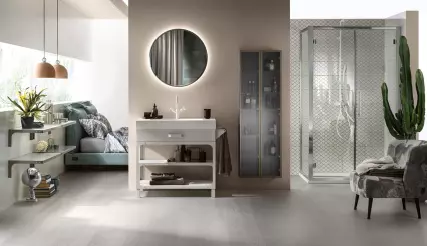
Diesel Living with Scavolini
THE FASHION HOUSES’ STRATEGY IS ABOUT PERCEPTION AND BRANDING
“Fashion starts from a strong seasonal concept on the catwalk” continues Venier. “Despite this, it lives thanks to the more mainstream solutions. It's an approach that secures a turnover and allows brands to keep building on dreams and on highlighting their values for communication purposes”, explains Venier.“Fashion invests in research but horizontally: it picks up signals here and there and goes with them, imagines, dares and creates universes. Nothing is ever too deep - and everything changes seasonally - but it is always extremely communicative and people-related”.
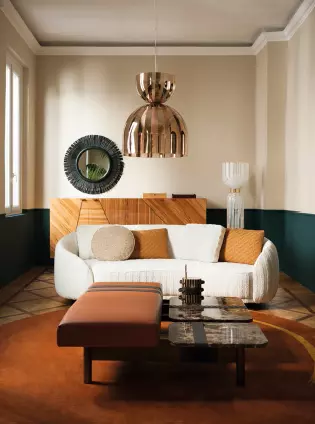
Fendi Casa
WHERE ARE FURNITURE BRANDS, IN ALL THIS?
Furniture companies do exactly the opposite.“Most of them exist thanks to a few iconic best-sellers, in most cases designed by maestros from the past”, says Venier. “They do research vertically: it's a serious but slow approach resulting in nothing dramatically new (visually speaking) but, rather, in technological, production or material advancements that only a few can appreciate. The result is a self-referential attitude and very little branding. The exact opposite of what fashion does”.
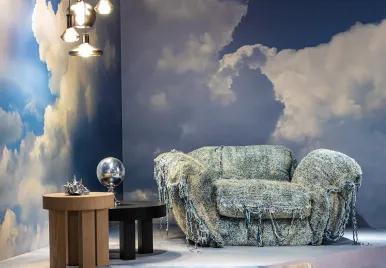
Diesel Living with Moroso
A RECENT PHENOMENON ARE HOME COLLECTIONS BY FASHION BRANDS SIGNED BY FURNITURE DESIGNERS
Celebrity ones, whose name is quite well known in their fields. Does this indicate a less individualistic approach, more focused on the star product as it occurs in the furniture industry? “I don't think so”, says Alba Cappellieri. “It's basically a co-branding operation. If we want to bring the best of the fashion and the design world together something else should happen”.WHAT, EXACTLY?
“The problem we face today is the overpower of markets and marketing ideas” continues Cappellieri. “Italian fashion became world-famous in the 80s because it used to integrate the genius and supreme craftsmanship of external creators into production, and steered fashion into the prêt-à-porter”. It was a model that had already been working very well for Italian design furniture since the 50s: when the coupling of enlightened industrialists, creative architects and skilled, experimental artisans brought to the world when interiors that would not follow trends but supported emerging social behaviours. “Yet the globalisation of brands has moved fashion brands into a one-dimensional approach in which fashion designers sell all sorts (from clothes, to food, to hospitality concepts to furniture) without nurturing creativity and fostering innovation through the previous external collaborations. Furniture brands, on the other hand, noticing the success of fashion labels, mimicked them in their season approach (by far their most ephemeral quality)”. So now they also propose sofas that can be dressed and undressed, churn out lots of products each winter and summer, go for the “total look”. “Both fashion and design should look back at their old selves and re-discover what they lost”, says Cappellieri. “And design culture - of which fashion is after all one element - could be instrumental to get there and to create a more meaningful future for our concept of living”.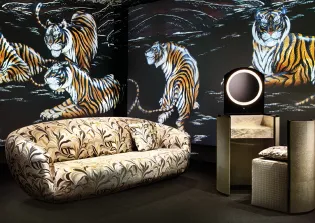
Armani Casa
IT IS NOT NOSTALGIA BUT THE OPPOSITE
“In a time in which durability is essential and seasonality should probably be replaced by timelessness - in all product sectors, in the name of a most sustainable consumption - we should look to re-merge the concept of habitus and habitare”, concludes Cappellieri.Copyright © Homa 2023
All rights reserved

.jpg?VGhlIFBlcmZlY3QgU2xvdC1pbijmraPnoa4pLmpwZw==)












.jpg?MTkyMHg3MjDvvIhkZXPvvIkuanBn)
.jpg?MTAyNHg3NDDvvIhkZXPvvIkuanBn)



















